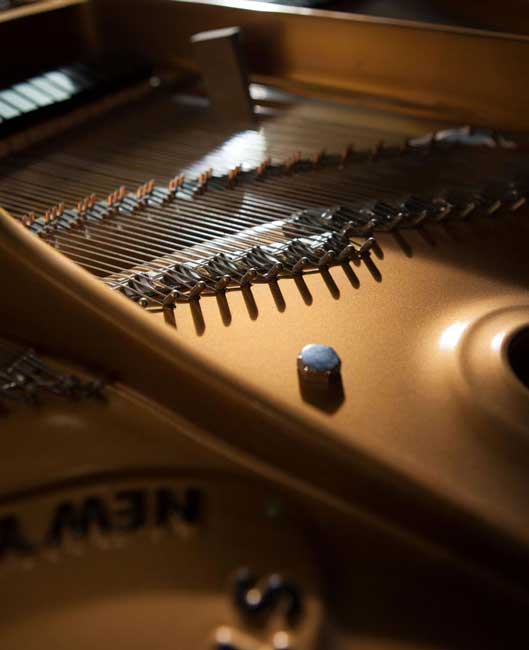Tuning Stability
PIANO MAINTENANCE
Piano Tuning and Care

Tuning Stability
As a piano owner, there are concrete steps you can take to stabilize the humidity in or around your piano. By stabilizing humidity, you will greatly increase how long a tuning lasts and you will avoid potential damage to your instrument caused by environmental extremes.
You have likely observed that your piano goes out of tune over time. You may have also noticed that there is a dramatic change in the tuning when you begin heating your home in the winter and when you stop heating in the late spring. These changes in the tuning are caused by changes in humidity. It is a cold, hard fact: If humidity changes, a piano will inevitably go out of tune. (See ‘why pianos go out of tune‘, for more.) In addition, dramatic humidity changes can damage your piano and reduce its lifespan.
You’re likely all too familiar with the humidity instability in your home: It is dry in the winter and moist in the summer. For optimal tuning stability, your piano should always be kept at a comfortable 45% relative humidity. If you are not taking steps to stabilize humidity, it is likely that the humidity in your home ranges from 20% or less in the winter to 70% or more in the summer.
To stabilize humidity, we need to add moisture to the air in the winter and remove moisture from the air in the summer. There are two approaches to improving humidity stability for your piano:
- Stabilize humidity in your entire home, or at least in the room where your piano is kept.
- Stabilize the humidity inside your piano with a climate control system designed specifically for pianos, installed in your piano.
Either of these approaches can be very effective, however there are some distinct advantages to the second.
If you pursue stabilizing humidity in your entire home or in your piano room, you will need to use either a furnace humidifier, which is costly, or a room humidifier, which is noisy. In addition, maintaining 45% relative humidity in the coldest months can result in condensation on your windows and cold outer walls. You will also need to monitor the humidity with a hygrometer and make regular adjustments to offset for changes in heating. In the summer, you will need to keep your home closed up and use air conditioning regularly, a significant expense, and probably only modestly effective at keeping the air dry enough.





Climate Control
A climate control system installed in your piano will be noiseless, is self-regulating, and has a stabilizing effect right where you need it – in your piano’s immediate micro-environment.
Some piano technicians really push all of their clients to have a climate control system installed in their piano and suggest that pianos will be damaged without them. I see it a little bit differently. I believe these systems should be installed only if either of these reasons apply to you:
- You want your piano’s tuning to be more stable and/or you want to extend the life of your piano as long as possible.
- Your piano is in an extreme environment.
If neither of these apply to you, there is not a compelling reason to have a climate control system installed in your piano.
If either of these reasons do apply to you, I strongly encourage you to take active steps to moderate humidity changes for your piano, and you may want to consider having a climate control system installed in your piano. I am happy to discuss this more with you. You can read more about the climate control system that is the industry standard, here. I am a certified installer for these systems.
Call or Text: 703-853-8627
Email: schaldach.piano.service@gmail.com
